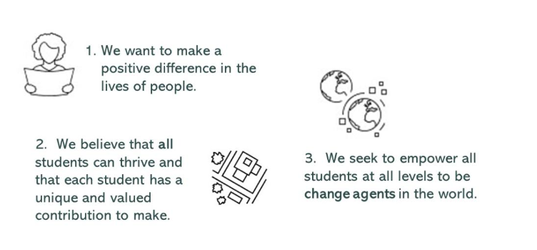- Home
- :
- All Communities
- :
- Industries
- :
- Education
- :
- Education Blog
- :
- Ways to teach Equity and Ethics in GIS courses
Ways to teach Equity and Ethics in GIS courses
- Subscribe to RSS Feed
- Mark as New
- Mark as Read
- Bookmark
- Subscribe
- Printer Friendly Page
Ethics matter in GIS because: (1) Knowing that maps are powerful means of communication, mapmakers should take that responsibility as map authors seriously. (2) Because everyone is now a potential map producer, and no longer just a map consumer, there are more maps in existence than ever before–with a wide variety of quality and purposes–some well documented, some not so. That said, maps still have an aura of authenticity–-they tend to be believed. Take that responsibility seriously, and do not intentionally mislead your audience.
Equity matters because it is central to achieving a more equitable, just, and fair society. We believe that wiser decisions made with GIS and the spatial perspective can help us achieve these societal goals. It also strikes close to home to me of what makes us human and also what inspired us to pursue a career in GIS and education in the first place, as I describe below:
I am passionate about helping instructors bring equity and ethics out of something that is relegated to Week 15 of a course to a thread that runs through courses. Just like important themes of scale and data representation, I believe that equity and ethics are just too important to sideline. I would also argue that these topics should be taught outside of GIS and GIScience in many other courses, and that the use of geotechnology is an engaging and relevant way of incorporating these topics in practical and memorable ways.
In the following videos, I model how to teach about equity and ethics. This includes:
1. Defining the terms and why these concepts matter.
2. Covering such topics as fairness, location privacy, copyright, data quality, trust, fitness for use, truth in labeling, and others.
3. Connecting core topics in mapping and GIS such as map projections, symbology, classification methods, ways of communicating using web mapping applications, and others, to equity and ethics.
4. Modeling the use of tools such as ArcGIS Online, ArcGIS Pro, story maps and instant apps, gigapixel images, ArcGIS Survey123, Google Maps, GapMinder graphs and charts, WorldMapper and BouncyMaps cartograms, and others.
5. Modeling strategies and methods, including role playing, GIS-based hands-on activities, discussion, field methods, and the use of imagery, vector data sets, data at different resolutions, and others. Some of these methods are described in text form that fosters deep discussion in the following articles:
- A story map: Teaching equity with spatial thinking and GIS.
- A story map: Teaching and Learning Ethics with Spatial Thinking and Geotechnology.
- Article on the American Geographical Society's site: Teaching Ethics with GIS.
- My chapter on Location Privacy in the UCGIS Body of Knowledge.
- An introduction to ethics in GIS.
- Reflections on recent geo-ethics discussions.
- Concept review module on geospatial ethics from the GeoTech Center.
- Case studies in geo-ethics.
- Teaching and learning with the Geoprivacy Video Series.
- Terms for using copyrighted imagery.
- Does posting pictures compromise privacy?
- The results and societal implications from a smoking case study.
- Potential harm to the environment from geotagging photographs.
To see how these could be taught in the classroom, see my recent presentation, served in 3 parts:
Part 1: https://youtu.be/P34P4QvIXYo?si=FQKa5D5VCbPPIOaz
Part 2: https://youtu.be/AZgwVkPM3T4?si=si3rcdt33GZOc65g
Part 3: https://youtu.be/WbUWGw1eJdE?si=hnXVASSvMh748tU3
I have been thankful to have the opportunity to test these tools and methods in many different settings over several years, including tribal colleges, community colleges, technical colleges, universities, and even with secondary school teachers in professional development institutes. I have refined them over the past months and years, but like you reading the Esri Community Education blog, I am always seeking input and ways to improve. Thank you for any feedback,
--Joseph Kerski
You must be a registered user to add a comment. If you've already registered, sign in. Otherwise, register and sign in.
-
Administration
80 -
Announcements
80 -
Career & Tech Ed
1 -
Curriculum-Learning Resources
259 -
Education Facilities
24 -
Events
72 -
GeoInquiries
1 -
Higher Education
598 -
Informal Education
281 -
Licensing Best Practices
93 -
National Geographic MapMaker
33 -
Pedagogy and Education Theory
226 -
Schools (K - 12)
282 -
Schools (K-12)
273 -
Spatial data
35 -
STEM
3 -
Students - Higher Education
246 -
Students - K-12 Schools
129 -
Success Stories
36 -
TeacherDesk
1 -
Tech Tips
121
- « Previous
- Next »

